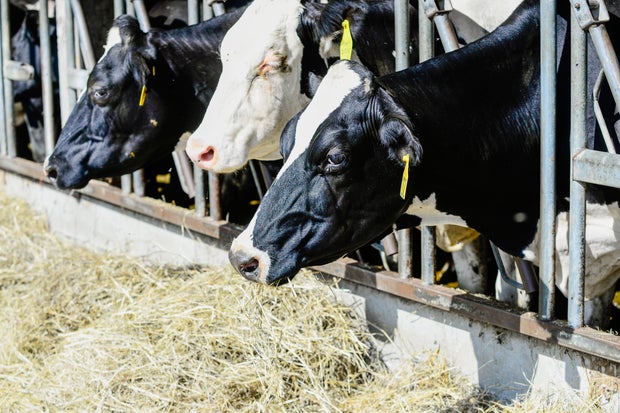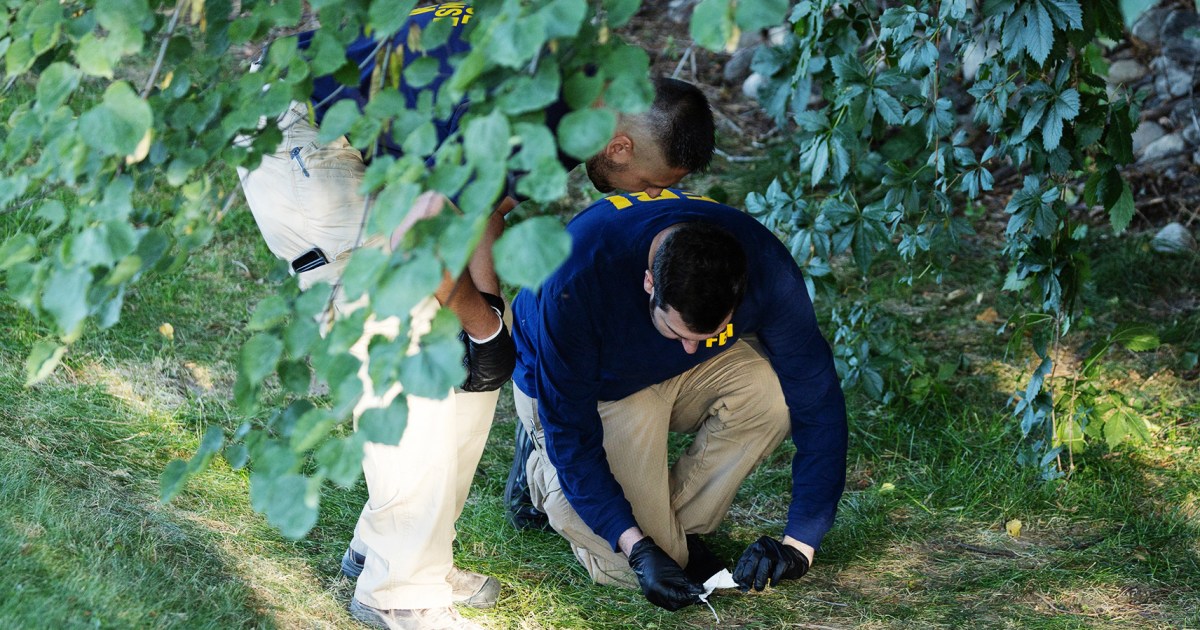An ongoing drought in Vermont is causing problems for dairy farmers who have been pushed to adapt and take costly measures to care for their cattle.
Feed crops like grass, alfalfa and corn are not growing well. Farmers say that has diminished returns on their crop investments and is forcing them to spend thousands on supplemental feed for their cows. Some have also resorted to hauling water in order to keep their Holsteins hydrated.
“All of a sudden you go from possibly making some money to absolutely not making any money,” said Allan Brisson, who has been a dairy farmer at Allandra Farm in western Vermont for more than half a century.
Drought effects “very noticeable”
Vermont is currently experiencing two droughts: a long-term drought that started last fall and a flash drought that started in early June, according to Lesley-Ann Dupigny-Giroux, the state’s climatologist and chair of the Vermont Drought Task Force.
As of Sept. 16, 78% of the Green Mountain state is in a severe drought and another 2% is in an extreme drought — up from 65% and 0% respectively, according to the U.S. Drought Monitor. The “extreme” ranking is the fourth highest on a five-level scale.
Vermont’s Agency of Natural Resources says some areas have seen about eight inches less rain than usual in the last four months and moisture in the soil is 60-80% below average.
“The effects of drought have become very noticeable in the last 3-4 weeks and include stunted crops, dry soils, brown lawns, a high wildfire danger, and record low streamflow and groundwater levels,” said Dupigny-Giroux.
Droughts in Vermont aren’t new; there was a bad one in 2001. But farmers say they’ve noticed weather patterns are becoming more extreme and harder to predict.
Dairy farmer Steve Kayhart, who runs Kayhart Brothers Dairy in West Addison, said he worries about his children and future generations.
“It’s not gonna be easier to do what we do for a living,” he said. “It will only get harder and harder.”
Farmers struggling as they adapt
Dairy farming is central to Vermont’s economy. It generates $5.4 billion annually, accounts for some 58% of the state’s agricultural sales, and produces 63% of New England’s milk, according to Vermont’s agriculture agency. Its latest report, in April, said the number of dairy processors in the state has nearly doubled over the last decade.
Jon Lucas, a dairy farmer in Orwell for 25 years, said he hauls water twice a day in a borrowed truck from a nearby creek to wash equipment and hydrate his 340 Holstein cows — who each drink 50 gallons a day. He said his wells have run dry and he lacks municipal water.
“The first thing I think about when I wake up in the morning and the last thing I think about before I go to bed is making sure that the cows have enough water,” he told CBS News.
He also said he will soon spend $100,000 to purchase extra food for his cows, and that he has lost money from crops that have no yield. Typically, Lucas grows enough feed to last through the winter, but not this season.
Kristopher Radder/The Brattleboro Reformer via AP
Brisson, at Allandra Farm, said the dry skies will lead to 40% less feed growing on their property compared to what was expected, so he will have to purchase substitutes for his 1,100 cows. Cows need quality, nutrition-dense feed to prevent a reduction in milk quality, which would risk profits. He is upping the amount of dietary supplement he gives to his livestock.
Melanie Harrison, who owns Harrison’s Homegrown, a dairy farm in Addison, with her husband, reports a 50% drop in feed being grown because of the drought, which she expects will lead to a 25% drop in profits. She increased the amount of grain in her cows’ feed to help boost protein that they are not getting in drought-depleted forage.
Both Brisson and Harrison live near Lake Champlain, which is at its lowest level since the 1930s, according to state climatologist Dupigny-Giroux.
Government assistance threshold
Despite the challenges, the threshold for government assistance seems to be weeks away, according to Anson Tebbetts, the Secretary of the Vermont Agency of Agriculture.
Vermont needs to be experiencing “severe” drought, according to the U.S. Drought Monitor, for eight weeks to typically trigger a secretarial disaster declaration. Or it could be triggered if the state reaches “extreme” drought.
Vermont has been in severe drought for less than a month.
Officials say they are monitoring the situation and assessing data to see if a government response is warranted.
Dupigny-Giroux said Vermont has already met the conditions for several types of droughts — meteorological, agricultural, hydrological, and socioeconomic — but needs more data to assess if the state is in an ecological drought, which significantly alters soil conditions and ecology, sometimes permanently.
She said more than 10 inches of rain would need to fall in order to improve the hydrological drought.
According to Tebbents, the small amounts of rain that has fallen in the last few weeks has not made a sizable difference to improve conditions. He said that even if it started raining tremendously, the losses from the growing season can’t be made up because frost is on the horizon.
This drought is a departure from the last few summers when floods were an issue. In July 2024, Gov. Phil Scott declared a secretarial disaster for flooding. “We’ve flipped the script completely,” Tebbents said.
On Thursday, the state asked Vermonters to report drought impacts, including wells or water supplies running out or changes in the taste of water, as well as damage to crops and other farm losses. The assessment will help scientists study what is happening. Farmers have said they have reached out to government agencies to detail their situations.
The state’s agricultural agency has also started a water hauling website that lists businesses that provide water hauling services to people like Lucas, the dairy farmer in Orwell.
Lucas believes the only way forward is adaptation, saying, “we can’t pick the weather, but we can choose how to mold our businesses.”
Source link


